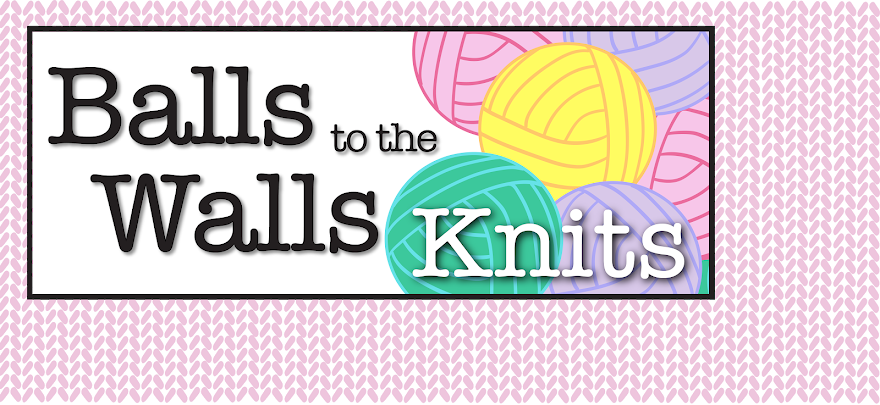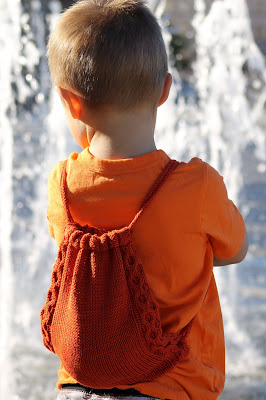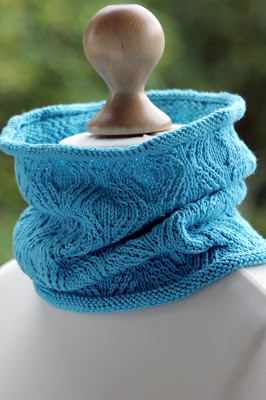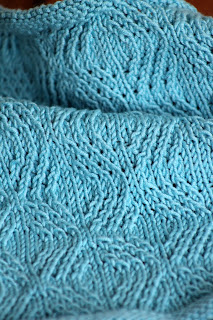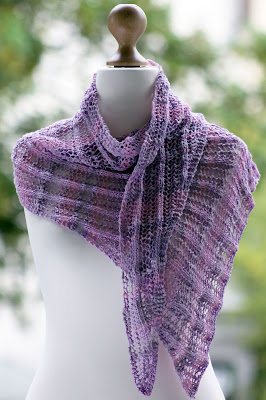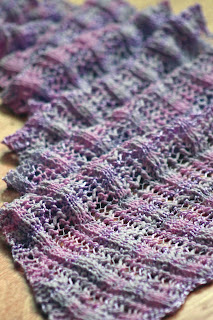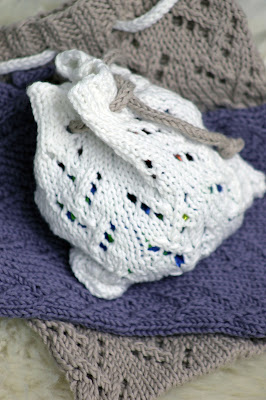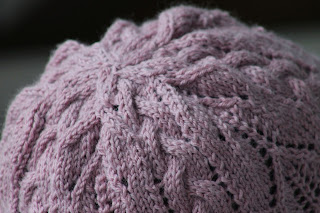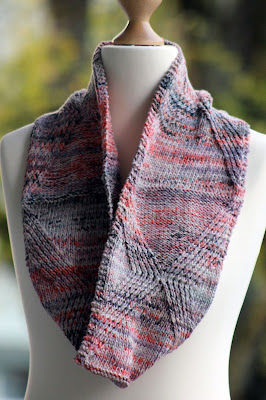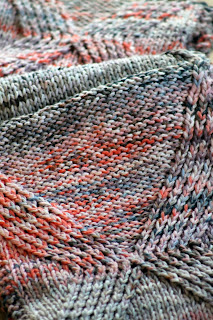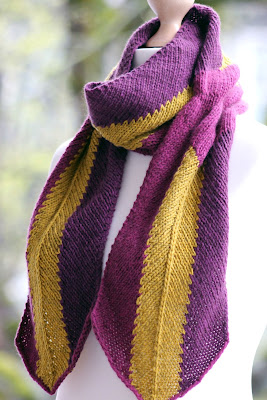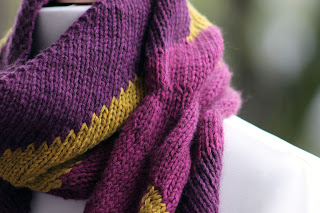 |
| Divine Drape Cowl |
If this cowl is one thing, it's a summer-to-autumn wardrobe staple that would look great in any color, at virtually any length. And if it's two things, it's also yet another one of my attempts at the absolute perfect cowl design: not too bulky around the back of the neck, but with enough fun in the front to attract some attention. And heck, while we're at it - why not make it THREE things -- or in other words, your next project? ;)
Yarn: Premier Yarns Cotton Fair (52% Cotton, 48% Acrylic; 317 yards [290 meters]/100 grams); #27-09 Lavender - one skein
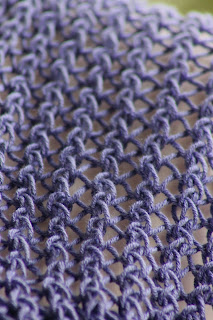 |
| The main stitch pattern. Airy and pretty, no? |
Notions: Tapestry needle
Gauge: 23 stitches = 4 inches in stockinette on size US 4 needles
So let's make a cowl! Using your size 5 needles and a length of scrap yarn, then, cast on 35 stitches provisionally. Transfer work to your size 4 needles and knit two transition rows, as follows:
Transition Row 1 (wrong side): purl
Transition Row 2: knit
Knit these two transition rows, and then transfer work to your size 3 needles and we'll work a ribbing for a bit, like so:
Ribbing Row 1 (wrong side): p1, * k1, p1; rep from * until you reach the end of the row
Ribbing Row 2: k1, * p1, k1 *
